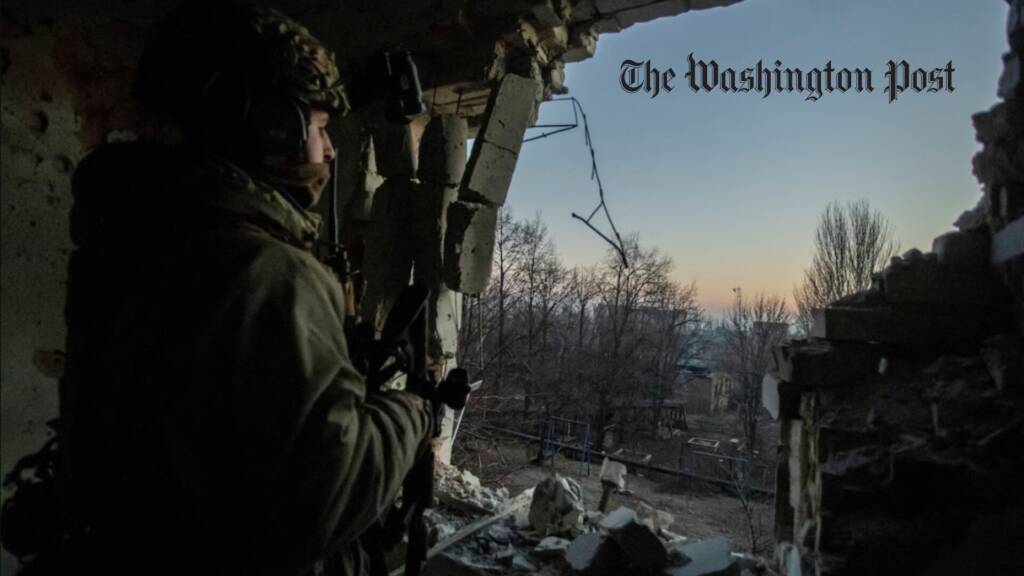Washington Post is an American News Paper owned by amazon.com. It has many editors, but David Ignatius is the most interesting of them. David Ignatius, the favorite prophet of Pentagon prowess and CIA shenanigans, is back at it with his crystal ball! This time, he’s heralding the ATACM-300 long-range missile as the “game changer” in Ukraine’s conflict. According to him, these new toys will let Ukraine poke far into Russian-held backyard, scrambling their supply lines like eggs at a brunch buffet.
Ignatius spins a tale where these precision-guided presents might just carve a path to a peaceful resolution, adding another layer of hope that Ukraine’s independence isn’t just a fleeting dream. This sounds awfully rosy, doesn’t it? Especially when you consider that we’ve been down this road before with Mr. Ignatius and his forecasts. Remember last year’s hype around the HIMARS missiles? Those were also supposed to be game changers, yet here we are, still waiting for the game to change while Russian electronic warfare turned those dreams into static.
And it’s not just about the electronic jamming jazz. Ignatius seems to have skipped a few notes on his keyboard when playing his latest symphony of optimism. Let’s talk air defense, shall we? The Russian arsenal is like a multi-layered onion of anti-missile systems, from the snazzy Pantsir-S1 to the formidable S-400. These layers are designed to make any missile’s life miserable, including our star of the show, the ATACM. Considering each ATACM system can cost about $1.5 billion versus the $15 million for a Pantsir, it’s like betting a yacht against a dinghy in a high-stakes race.
Plus, let’s not forget the slow waltz of weapon deliveries that’s left Ukraine’s defenses panting. Last month’s scoreboard read: Russia grabbed 35 square miles of turf, while Ukraine reclaimed a modest two. So while Ignatius paints a picture of missile magic paving the road to victory, the reality on the ground might just need a bit more than just shiny new rockets to turn the tide.
Maybe next week, David will tell us about another miraculous weapon system. But for now, let’s just say we’re not holding our breath.
Ah, David Ignatius! Last year’s sage advice about the Abrams and Leopold tanks making a splash on the Ukrainian front had us all tuned in. According to the whispers in Washington and Berlin, these tanks were supposed to be the heavy metal heroes in Ukraine’s rock band. But, as it turns out, they were more like a one-hit-wonder than a revolutionary change. As these tanks rolled in, Russia just kept on tuning its own military machine, barely missing a beat.
Fast forward to today, and the narrative isn’t much sunnier. The reality is, Russia holds a stacked deck with more troops and toys. The idea of Ukraine flipping this grim script seems about as likely as finding a unicorn at a horse race. Yet, amid this bleak outlook, Vladimir Putin is like the gambler who keeps upping the ante, ready to tank his economy to keep the military machine humming. Russia is now throwing a third of its national budget into this bottomless pit, with tax hikes on the horizon to keep the war chest filled.
On the economic front, Russia is betting big but facing tech troubles and stiff sanctions that leave it lagging in the global tech race. Yet, Putin’s playing the long game, cozying up to China, swapping sovereignty for support and tech toys. With oil and gas sales to China and India keeping the Russian budget afloat, it seems the Kremlin’s war fund isn’t drying up anytime soon.
Meanwhile, back in the U.S., the cold warriors are dusting off their old playbooks, preaching that military aid is the only way to keep Ukraine from folding. They paint a dire picture: without U.S. help, Russian boots could march from the Black Sea all the way to Poland. And just when you thought the Cold War rhetoric was old news, there’s talk of gearing up for a showdown with China by 2027. It’s like we’re back in the 50s and 60s, only the actors have changed, but the script? Eerily similar.
